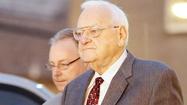WASHINGTON — The Obama administration on Friday proposed yet another compromise to address strenuous objections from religious organizations about a policy requiring health insurance plans to provide free contraceptives, but the change did not end the political furor or legal fight over the issue.
The proposal could expand the number of groups that do not need to pay directly for birth control coverage, encompassing not only churches and other religious organizations, but also some religiously affiliated hospitals, universities and social service agencies. Health insurance companies would pay for the coverage.
The latest proposed change is the third in the last 15 months, all announced on Fridays, as President Obama has struggled to balance women’s rights, health care and religious liberty. Legal experts said the fight could end up in the Supreme Court.
Kathleen Sebelius, the secretary of health and human services, said the proposal would guarantee free coverage of birth control “while respecting religious concerns.”
But Kyle Duncan, the general counsel of the Becket Fund for Religious Liberty in Washington, which is representing employers in eight lawsuits, said the litigation would continue. “Today’s proposed rule does nothing to protect the religious freedom of millions of Americans,” Mr. Duncan said.
Religious groups dissatisfied with the new proposal want a broader, more explicit exemption for religious organizations and protection for secular businesses owned by people with religious objections to contraceptive coverage.
The tortured history of the rule has played out in several chapters. The Obama administration first issued standards requiring insurers to cover contraceptives for women in August 2011, less than a month after receiving recommendations to that effect from the National Academy of Sciences. In January 2012, the administration rejected a broad exemption sought by the Roman Catholic Church for insurance provided by Catholic hospitals, colleges and charities. After a firestorm of criticism from Catholic bishops and Republican lawmakers, the administration offered a possible compromise that February. But it left many questions unanswered and did not say how coverage would be provided for self-insured religious organizations.
Under the new proposal, churches and nonprofit religious organizations that object to providing birth control coverage on religious grounds would not have to pay for it.
Female employees could get free contraceptive coverage through a separate plan that would be provided by a health insurer. Institutions objecting to the coverage would not pay for the contraceptives.
Insurance companies would bear the cost of providing the separate coverage, with the possibility of recouping the costs through lower health care expenses resulting in part from fewer births.
Chiquita Brooks-LaSure, who helped develop the proposal as deputy director of the federal office that regulates health insurance, said: “Under the proposed rule, insurance companies — not churches or other religious organizations — will cover contraceptive services. No nonprofit religious institution will be forced to pay for or provide contraceptive coverage, and churches and houses of worship are specifically exempt.”
Moreover, she said, “Nonprofit religious organizations like universities, hospitals or charities with religious objections won’t have to arrange, contract or pay for coverage of these services for their employees or students.”
But some of the lawsuits objecting to the plan have been filed by businesses owned by people who say they have religious reasons for not wanting to provide contraceptive coverage. Under the proposed rule, “for-profit secular employers” would have to provide birth control coverage to employees, even if the business owners had a religious objection to the idea.











